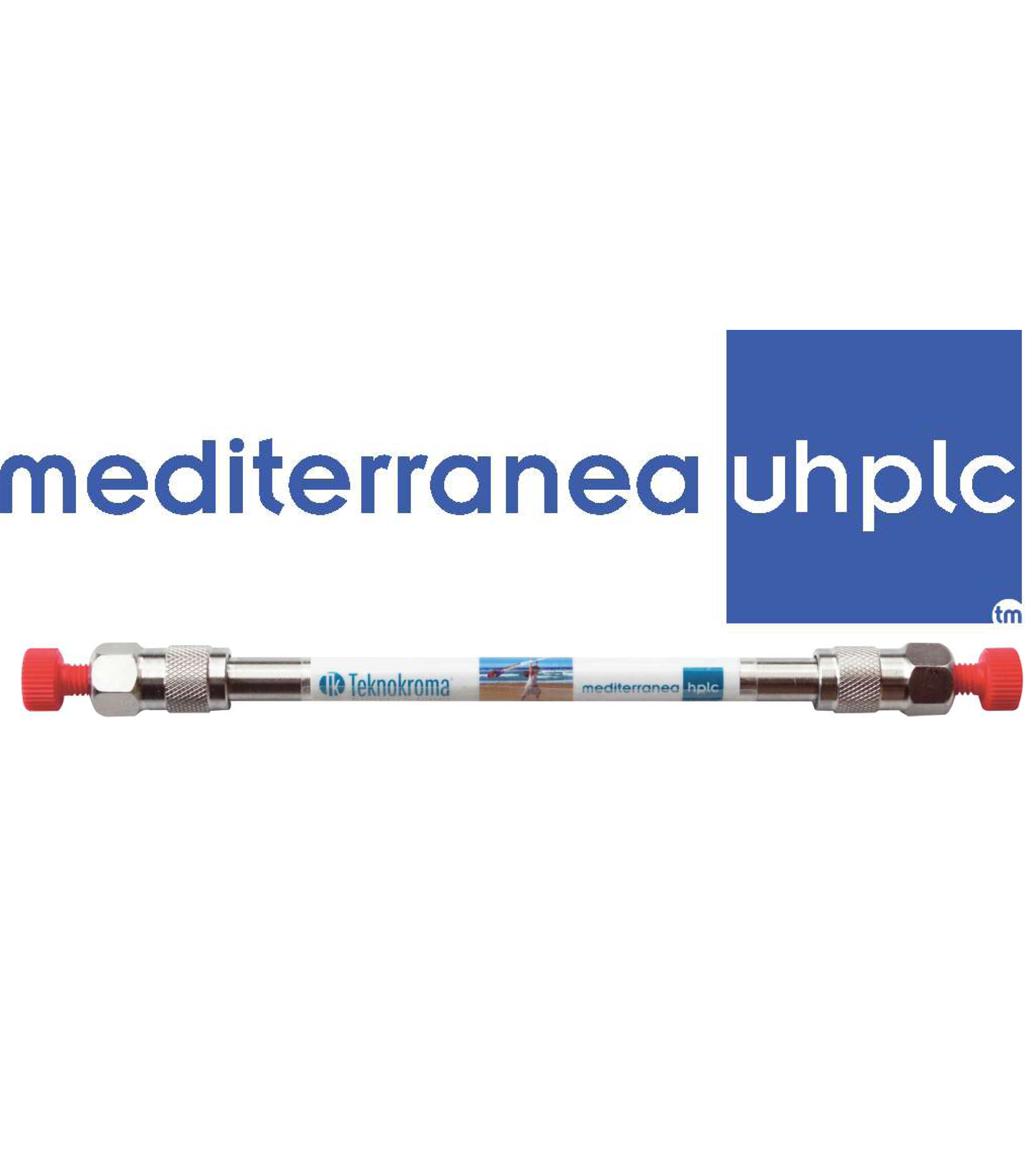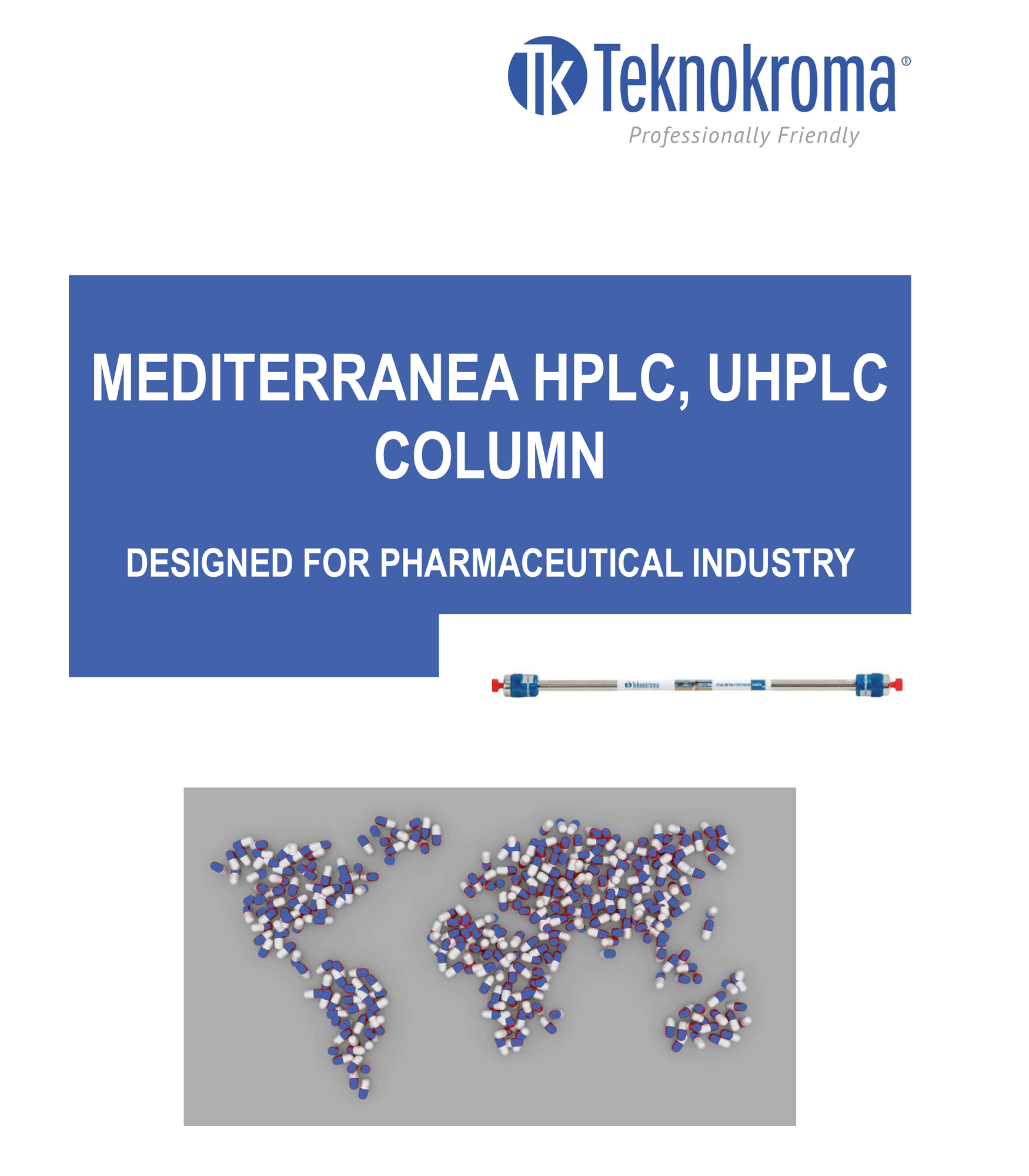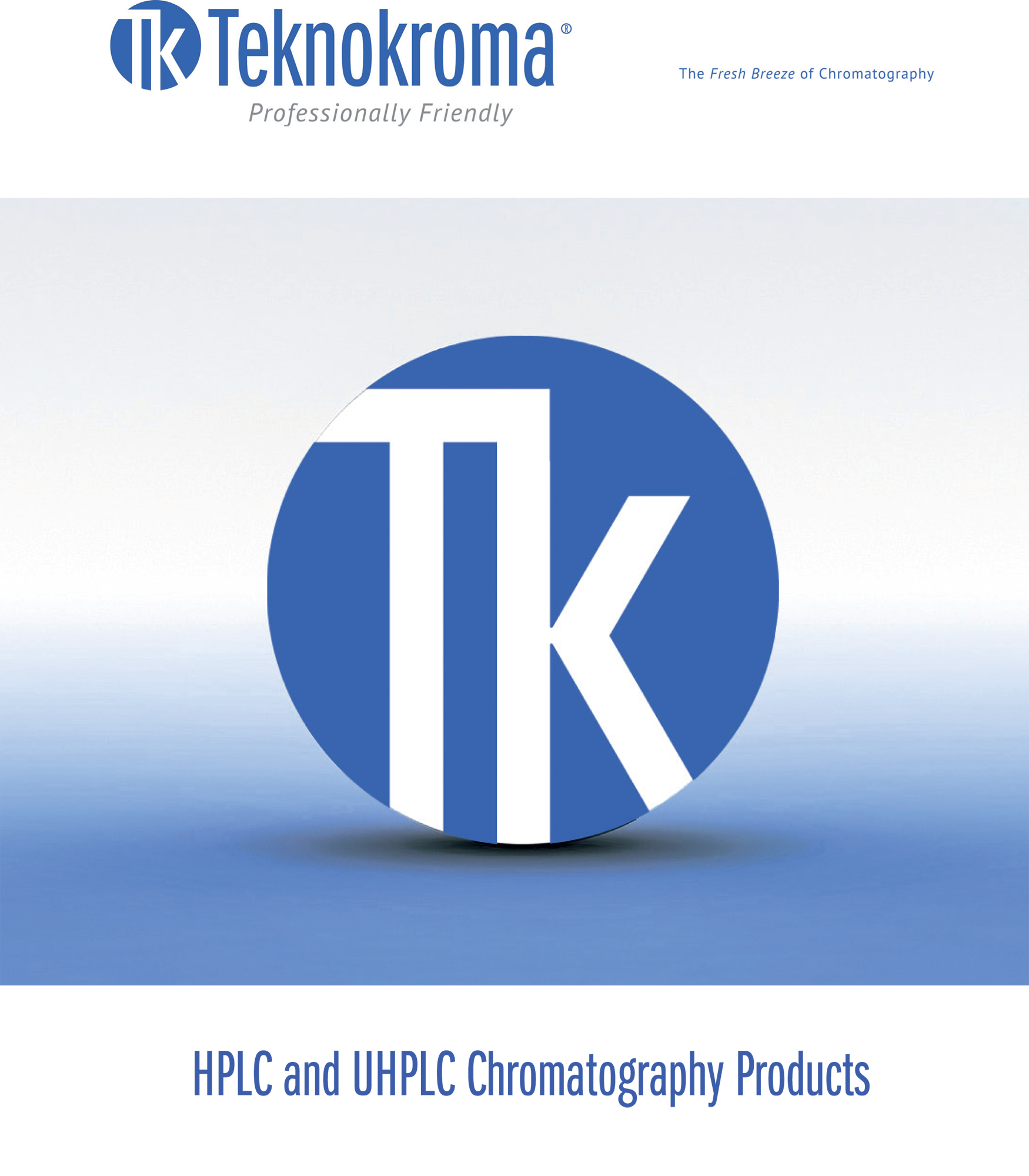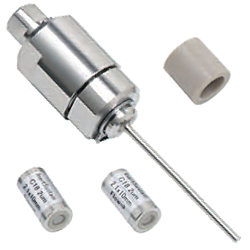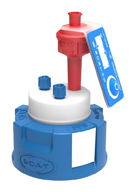NIST test for HPLC packings characterisation
The NIST test uses a mixture of five organic compounds (uracil, toluene, ethylbenzene, quinizarin and amitriptyline).
Uracil is an indicator of column dead volume (non-retained peak).
Toluene/Ethylbenzene the selectivity factor between these two compounds can be used to characterise differences between packing mainly due to hydrophobic interactions.
Quinizarine measures the activity towards chelating reagents.
Amitriptyline measures activity towards bases. It is an excellent indicator of the activity of residual silanols on the surface of the packaging.

The Mediterranean Sea 18 column has been subjected to the SRM870 test. This test designed by NIST, is currently considered to be the most recommended test for evaluating the most significant properties of a reversed phase column
The mediterranea ™ sea18 packing consists of perfectly spherical particles, a fully controlled pore design, silica completely free of trace metals and a carefully designed phase bonding process and final end-capping, a packing with a previously unachieved resistance to extreme pH values has been achieved.
The columns with mediterranea ™ sea18 fillers allow you to work with eluents from pH 1 to pH 12. This unusual resistance to pH values has been ensured as a result of efficient phase bonding and a patented end-capping process that provides a shield protection that prevents acidic and basic eluents from attacking the silica surface.
The pH stability graphs show the efficiency of the process.
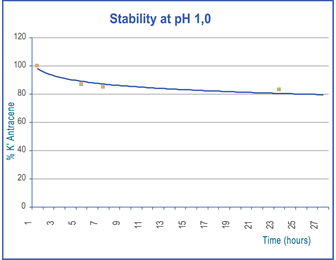
With an eluent as acidic as pH 1, the column stabilizes in a short period of time so that it is even possible to work under these extreme conditions.
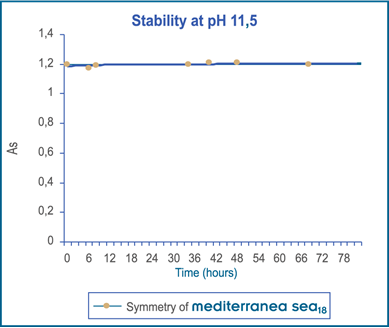
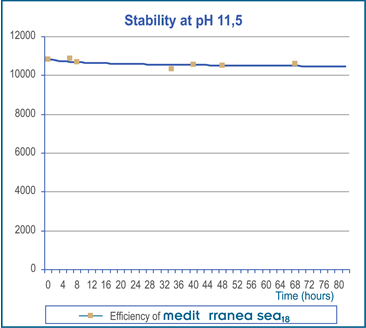
Eluting the Mediterranean ™ sea18 column for 78 hours at pH 11.5 showed no significant deterioration in terms of efficiency and peak symmetry for diphenhydramine.
The mediterranea sea18 is a 100 % pure reverse phase packing with the additional advantage that it has an excellent retention of polar compounds and also allows working with 100 % aqueous mobile phases without any limitations.
It is known that fillers known as "polar embedded" have in principle the advantage over conventional fillers in that they can work in 100% aqueous media and also show good behavior towards basic compounds.
However, these advantages are achieved at the expense of a lower retention of polar compounds and a lower stability of the column, and of a chromatographic behavior that cannot be considered 100% reversed phase, since secondary interaction mechanisms can coexist, which will be marked by the special nature of the polar functional groups anchored at the base of the hydrocarbon chains.
The mediterranea sea18 packing significantly exceeds all the advantages of "polar embedded" packings and does not show any of their disadvantages. Moreover, thanks to its specially optimized endcapping process (MED), extreme strength and lifetime of the column is guaranteed.
As can be seen, the chromatograms obtained after eluting the column with 100% water for more than 40 hours show no appreciable alteration in the retention times or in the efficiency of the chromatographic peaks.
The Mediterranean ™sea18 column also passes the Stop Flow test, designed to highlight the "deweting" phenomenon that usually occurs in highly deactivated ODS type columns and which consists of the irreversible expulsion of the water included in the pores of the packing.
The table shows the retention times for different chromatographic peaks before and after passing the "Stop Flow" test. After 5 consecutive cycles, no significant alterations of the retention times are observed.

